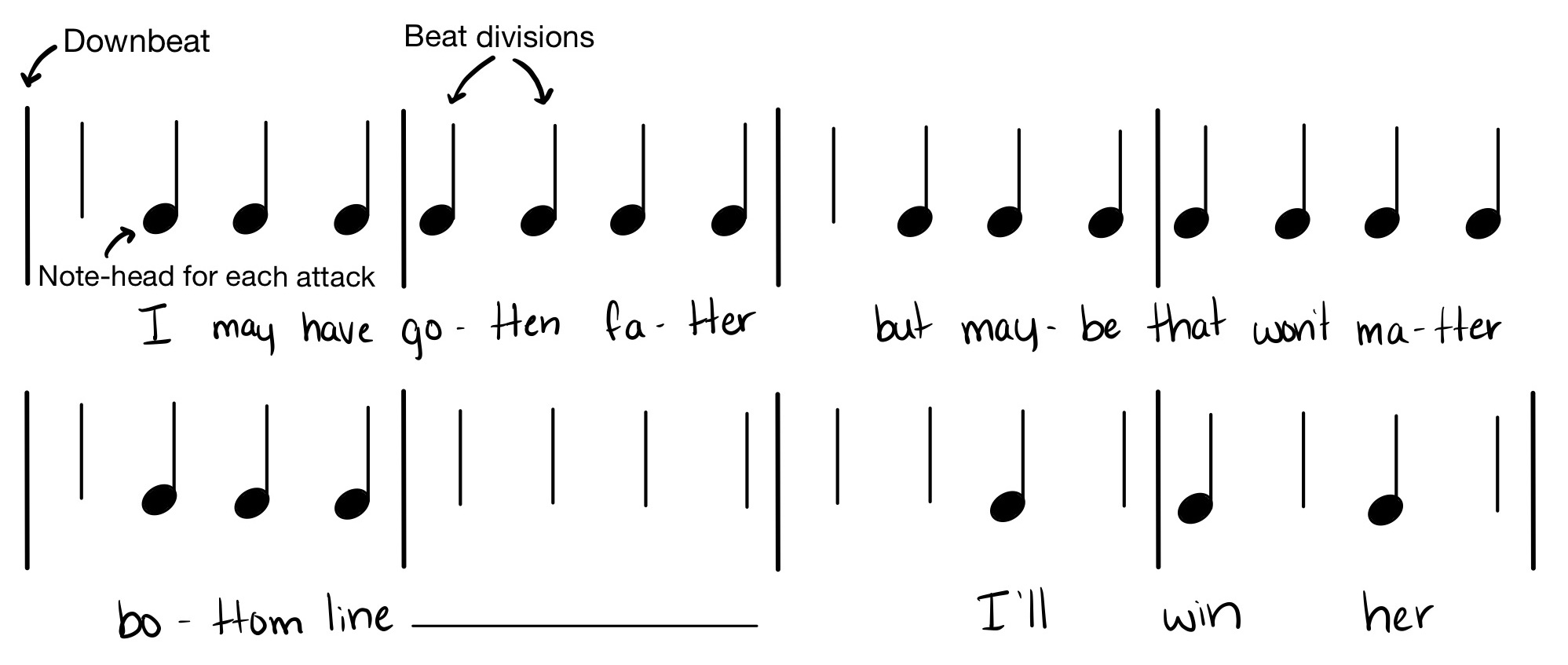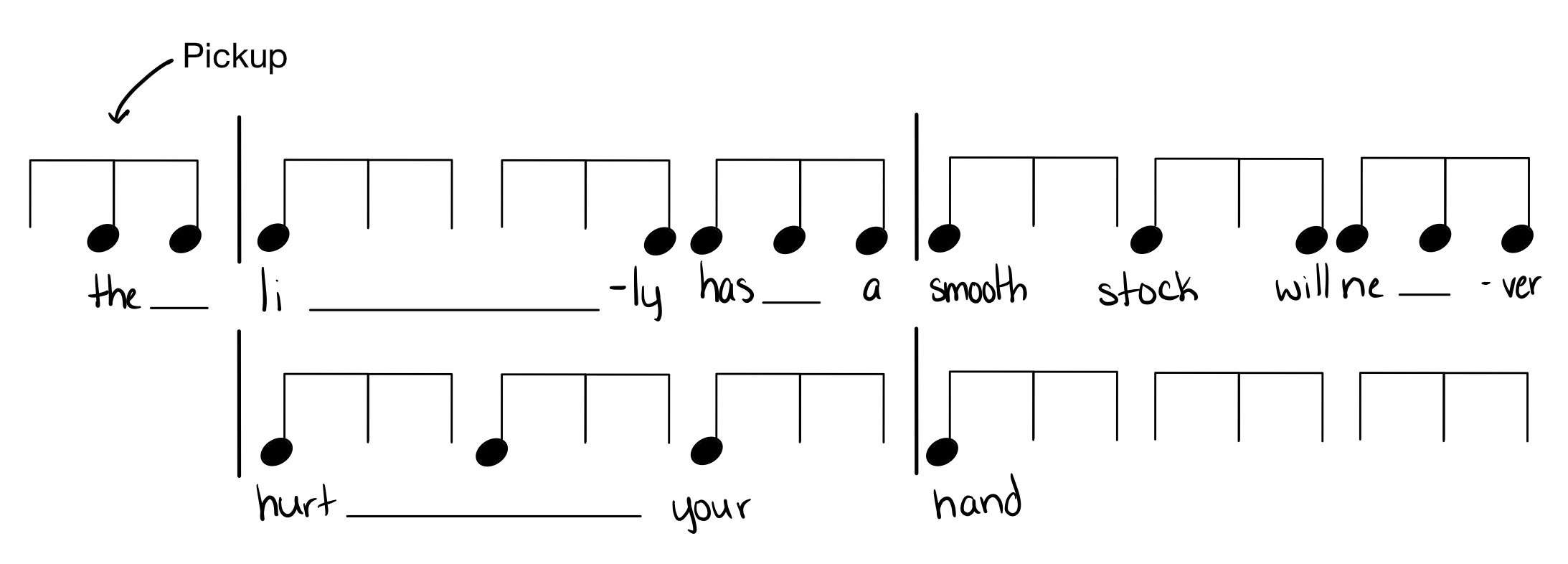Transcription with Notation Shorthand
The system of notation shorthand, developed by pedagogue Jenine Lawson Brown, can be useful in tracking the relationships between rhythm and meter in a way that is helpful in writing rhythmic notation. Even if an instructor doesn’t require you to use this system, you are encouraged to do so if you struggle with notating rhythm.
In notehead shorthand, every beat is represented by stems and beams as appropriate, showing how it divides. For example, each beat of a simple meter with 4 on the bottom (4/4, 3/4, 2/4, etc.) would be represented by a pair of beamed eighth note stems with no noteheads; each beat of a compound meter with 8 on the bottom (6/8, 9/8, 12/8, etc.) would be represented by a trio of beamed eighth note steps with no noteheads. Measures are shown with barlines, just as in traditional notation.
The first step of transcribing music using notation shorthand is to determine the meter, count the number of measures, and set up your barlines and placeholder stems/beams. Once this is set up, either listen again to the music or play it back in your head while tracking the beat division placeholders. Give the stems noteheads where a new note occurs.
Example: Notehead shorthand in simple meter
Completed notehead shorthand:

Example: Protonotation in compound meter
*the melody in this example starts at 0:19
Completed notehead shorthand:

To transform notation shorthand into traditional rhythmic notation:
- Find the first notehead you’ve written.
- Count how many beat divisions that note lasts by counting stems till the next notehead.
- Determine an appropriate rhythmic value by adding up these beat divisions.
As recommended in the previous section, make sure to clarify the meter in your notation by using beaming where appropriate. The general rule of thumb is that beams should join together notes smaller than a quarter note when they lie within the same beat; examples can be found here.

